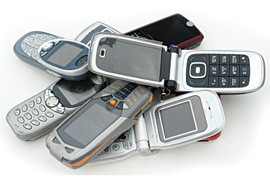Cronkite News has moved to a new home at cronkitenews.azpbs.org. Use this site to search archives from 2011 to May 2015. You can search the new site for current stories.
Lawmaker proposes 911 system tax on prepaid cellphone plans
PHOENIX – A state lawmaker wants the one in four Arizona cellphone users who are on prepaid plans to join customers with monthly bills in paying toward 911 service.
Legislation by Rep. Bob Robson, R–Chandler, would establish a tax of eight–tenths of 1 percent on prepaid wireless plans that would go into the state’s Emergency Telecommunication Services Revolving Fund.
Every other home phone and cellphone customer pays a tax of 20 cents a month that goes into the fund. At present, there is no tax on prepaid plans.
“What I’m trying to do is recognize that there has been a revenue stream that has not been collected from,” Robson said.
The fund collects about $16 million a year, but that barely covers operating costs, said Barbara Jaeger, 911 administrator at the state Department of Administration, which uses that money for equipment and maintenance.
“We no longer have sufficient revenue to cover the capital improvements,” Jaeger said.
Some remote parts of the state are taking a hit because of this, according to Liz Graeber, who administers 911 service in and around Phoenix. Seven of Arizona’s 15 counties use outdated equipment that can’t determine the exact location of callers, she said.
“When you rely on a caller to give you a location and they’re in a remote area, it can be very, very difficult,” Graeber said.
Jerry Fuentes, Arizona and New Mexico president for AT&T, a provider of prepaid cellphone plans, said his company supports the proposed change.
“It’s critical,” he said. “Everyone has to have access to 911, and it should be a state–of–the–art 911 service.”
Robson’s bill, HB 2094, received committee endorsements and was awaiting action by the full House.
He said it’s important to commit more money to the 911 system because the current technology operates on a 1980s platform.
“I’m certain that everybody would like their lives saved,” Robson said.







